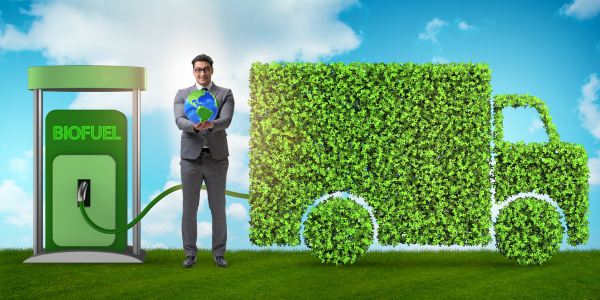
Table Of Contents:
- Introduction
- Major Steps taken by Automakers for EV Revolution In 2024-2025
- Challenges Face By Automakers In EV Revolution In 2024-2025
- Conclusion
- Frequently Asked Questions
Introduction:
As the global automotive industry continues its paradigm shift towards sustainability, the electric vehicle (EV) revolution stands as a beacon of hope for a greener future. With the year 2024 upon us and 2025 looming ahead, automakers are facing a pivotal moment. To ensure they’re not just participants but leaders in this transformative journey, several critical steps must be taken. Let’s explore the roadmap for automakers to navigate the EV revolution in the coming years.
Major Steps Taken By Automakers For EV Revolution In 2024-2025:
let’s delve deeper into each of these steps to provide a more comprehensive understanding of what automakers can do to facilitate the EV revolution in 2024-2025
1. Embrace Innovation and Technological Advancement for EV Revolution:
- Establish dedicated research and development teams focused on EV technologies, including battery chemistry, energy storage solutions, and electric drivetrains.
- Foster partnerships with universities, research institutions, and startups to leverage cutting-edge innovations in areas like artificial intelligence, materials science, and renewable energy integration.
- Invest in testing facilities and pilot projects to evaluate emerging technologies and accelerate their integration into production vehicles.
2. Expand and Enhance EV Infrastructure In 2024-2025:

- Collaborate with utilities and infrastructure providers to deploy fast-charging stations along popular travel routes and in urban centres.
- Explore innovative solutions such as wireless charging, vehicle-to-grid integration, and decentralized charging networks to improve convenience and accessibility for EV drivers.
- Advocate for policies and funding initiatives to support the expansion of EV infrastructure, including tax incentives, grants, and public-private partnerships.
3. Prioritize Affordability and Accessibility:
- Implement cost-saving measures throughout the supply chain, from raw material sourcing to manufacturing processes, to reduce the overall production cost of EVs.
- Offer flexible financing options, leasing programs, and incentives such as tax credits and rebates to make EV ownership more financially viable for consumers.
- Explore opportunities for shared mobility services and subscription-based models to provide affordable access to electric vehicles without the burden of ownership.
4. Enhance Range and Performance:

- Continuously optimize battery technology to increase energy density, reduce weight, and extend the driving range of EVs on a single charge.
- Integrate predictive analytics and machine learning algorithms to optimize energy usage and maximize efficiency in real-world driving conditions.
- Invest in lightweight materials, aerodynamic design, and advanced thermal management systems to improve overall vehicle performance and range.
5. Invest in Customer Education and Support:
- Develop comprehensive educational materials, including online tutorials, interactive tools, and in-person workshops, to educate consumers about the benefits and capabilities of electric vehicles.
- Train dealership staff and service technicians to provide knowledgeable support and assistance to prospective EV buyers, including guidance on charging infrastructure, maintenance requirements, and incentives.
- Establish dedicated customer service channels and online communities to address customer questions, concerns, and feedback related to electric vehicle ownership.
6. Commit to Sustainability and Environmental Responsibility:

- Implement environmental management systems and sustainability initiatives across all aspects of the business, from product design and manufacturing to supply chain management and waste disposal.
- Set ambitious sustainability targets, such as carbon neutrality, zero waste, and water conservation, and regularly monitor and report progress towards these goals.
- Engage with stakeholders, including customers, investors, and advocacy groups, to demonstrate a genuine commitment to environmental stewardship and corporate social responsibility.
7. Advocate for Supportive Policies and Regulations:
- Form industry alliances and trade associations to coordinate advocacy efforts and amplify the collective voice of automakers in support of favourable policies and regulations.
- Engage directly with policymakers at the local, national, and international levels to provide input and expertise on legislation related to electric vehicles, renewable energy, and sustainable transportation.
- Collaborate with other stakeholders, including environmental organizations, consumer advocacy groups, and labour unions, to build broad-based coalitions in support of policies that promote the adoption of electric vehicles and accelerate the transition to a low-carbon economy.
Challenges faced by Automakers in the EV Revolution in 2024-2025
Certainly, here are the top 5 challenges faced by automakers in the EV revolution in 2024-2025:
1. Battery Technology and Infrastructure:

Despite advancements, battery technology still faces challenges related to
- Energy density,
- Charging times
- Overall cost.
Automakers must continually innovate to improve battery performance while also addressing concerns about charging infrastructure, including the availability of charging stations and the need for faster charging solutions.
2. Supply Chain Constraints:
The shift to electric vehicles requires a significant reconfiguration of the automotive supply chain, including securing a stable and sustainable supply of critical materials such as
- Lithium,
- Cobalt
However, demand for these materials is increasing rapidly, leading to potential shortages and price volatility that can impact production timelines and costs.
3. Regulatory Uncertainty:
Automotive manufacturers operate in a complex regulatory environment with varying emissions standards, incentives, and mandates across different regions and countries. Uncertainty regarding future regulations, including emissions targets and vehicle electrification mandates, can create challenges for automakers in long-term planning and investment decisions.
4. Consumer Adoption and Education:

While consumer interest in electric vehicles is growing, there are still barriers to widespread adoption, including concerns about
- Range,
- Charging infrastructure,
- Upfront costs.
Automakers must invest in consumer education and awareness campaigns to address misconceptions and build confidence in EV technology, as well as offering compelling incentives and financing options to make EVs more accessible.
5. Technological Integration and Talent Acquisition:
The transition to electric mobility requires a workforce skilled in EV technology, including
- Battery engineering,
- Electric drivetrains, and
- Software development for connected and autonomous vehicles.
Automakers face challenges in recruiting and retaining talent with the necessary expertise, as well as integrating new technologies into existing vehicle platforms while maintaining quality and reliability standards.
Addressing these challenges requires a coordinated effort from automakers, governments, and other stakeholders to overcome technological, regulatory, and market barriers and accelerate the adoption of electric vehicles as a sustainable alternative to traditional internal combustion engine vehicles.
Conclusion:
The EV revolution presents a monumental opportunity for automakers to drive positive change and shape the future of mobility in many ways like
- Embracing innovation,
- Expanding infrastructure,
- Prioritizing affordability,
- Enhancing range and performance,
- Investing in education and support,
- Committing to sustainability,
- Advocating for supportive policies,
Automakers can lead the charge towards a cleaner, greener transportation ecosystem. As we navigate the road ahead, let’s seize this moment to accelerate towards a brighter and more sustainable future for generations to come.Top of Form
By implementing these strategies and working collaboratively with stakeholders across the automotive industry, government, and civil society, automakers can play a leading role in driving the EV revolution forward and realizing the vision of a cleaner, more sustainable future for all.
Frequently Asked Questions:
Automakers are focusing on advancements in battery technology, aiming to increase energy density and decrease charging times. Additionally, there’s a push towards developing more efficient electric drivetrains and integrating advanced driver-assistance systems (ADAS) for enhanced safety and autonomy.
Several automakers, including Tesla, Volkswagen, General Motors, and Ford, are leading the EV revolution. They are investing heavily in expanding their electric vehicle lineups, establishing new manufacturing facilities dedicated to EV production, and collaborating with battery suppliers to secure a steady supply of advanced batteries.
Automakers are partnering with charging infrastructure companies and governments to expand the EV charging network. They are investing in fast-charging technology to reduce charging times significantly and deploying charging stations along major highways and in urban areas to alleviate range anxiety and encourage EV adoption.
Automakers are working to lower the production costs of electric vehicles by investing in scalable platforms and streamlining manufacturing processes. Additionally, governments are offering incentives and subsidies for EV purchases, while automakers are introducing leasing programs and financing options to make EVs more accessible to a wider range of consumers.
Automakers are implementing sustainable practices in EV production, such as using recycled materials and reducing water and energy consumption. They are also exploring ways to improve battery recycling and repurposing efforts to minimize environmental impact. Furthermore, advancements in battery technology are aimed at increasing the lifespan of batteries, reducing the frequency of replacements, and ultimately lowering the environmental footprint of EVs.

